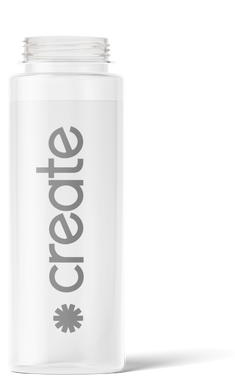The Powerful Combination Of Creatine And Lactic Acid
Unlock the dynamic potential of creatine and lactic acid, maximizing your body's performance, endurance, and transformative power.
The intricate relationship between creatine and lactic acid in human physiology has become a focal point in exercise science, sports medicine, and biochemistry. Creatine, naturally present in muscle tissue, plays a crucial role in energy metabolism, especially during high-intensity activities. Simultaneously, lactic acid, a byproduct of anaerobic metabolism, has been linked to muscle fatigue and discomfort during strenuous exercise. Recognizing the influence of these components is essential not only for athletes and fitness enthusiasts but also for researchers and practitioners aiming to refine training methods and improve human physical capabilities.
A Brief Analysis Of Creatine And Lactic Acid
Creatine and lactic acid, essential elements in human physiology, have been extensively studied, particularly in exercise and performance. Creatine, naturally found in muscle cells, acts as a rapid and replenishable source of ATP, the cellular energy currency crucial for short bursts of intense activity. On the flip side, lactic acid, a byproduct of anaerobic metabolism, has often been linked to muscle fatigue and the "burn" experienced during vigorous exercise. However, modern research challenges the traditional view of lactic acid as solely detrimental, highlighting its potential role as a fuel source and signaling molecule. As our understanding advances, so does the potential to optimize training strategies and enhance our comprehension of the intricate physiological responses involved in physical exertion.
Effects Of Creatine And Lactic Acid In Human Physiology
Creatine, a key energy source in muscles, enhances short-term, high-intensity performance. In contrast, lactic acid, once perceived solely as a fatigue contributor, is now recognized for its potential metabolic benefits. It serves as a rapid energy source and signaling molecule. Together, creatine and lactic acid intricately impact human physiology, influencing muscle function, energy metabolism, and overall performance during various physical activities. These are some of the effects that may influence your body’s performance:
Resistance Training Performance
The resistance in training performance is greatly influenced by the interplay of creatine and lactic acid within human physiology. Creatine, stored in muscles, serves as a rapid energy source, enhancing strength, power, and endurance during intense exercise. Lactic acid, a byproduct of anaerobic metabolism, contributes to muscle fatigue but also triggers adaptations leading to improved performance. Together, they optimize muscle function, allowing individuals to push their limits, increase workloads, and achieve greater gains in strength and muscle mass through resistance training.
Potential Cognitive Enhancement
Potential cognitive enhancement is intricately linked to the physiological effects of creatine and lactic acid. Creatine, known for its role in energy metabolism, aids in maintaining optimal brain function by supporting ATP production. Additionally, research suggests creatine supplementation may improve cognitive performance, memory, and attention. Lactic acid, despite its association with muscle fatigue, may also play a role in cognitive function by influencing neurotransmitter release and cerebral blood flow. Together, these compounds offer promising avenues for enhancing cognitive capabilities and mental acuity.
Contribution To Anaerobic Metabolism
Creatine and lactic acid are key contributors to anaerobic metabolism, crucial for short bursts of intense activity. Creatine phosphate rapidly regenerates ATP, providing immediate energy for muscle contractions. On the other hand, lactic acid accumulation occurs as a byproduct of glycolysis, causing muscle fatigue. Creatine monohydrate, unlike creatine phosphate, is a popular supplement that elevates creatinine levels in muscles, enhancing ATP regeneration and prolonging anaerobic performance. This supplementation supports increased power and strength during intense exercise, optimizing anaerobic metabolism.
Influence On Endurance Performance
Creatine boosts endurance by aiding ATP production during aerobic activities, sustaining energy for longer efforts. Lactic acid, often linked to fatigue, has a dual role. While excess accumulation may hinder performance, it can serve as an energy source. Balancing creatine's endurance support and navigating lactic acid's nuanced impact is crucial for optimizing strategies for prolonged physical activity and informing training methodologies for athletes and fitness enthusiasts seeking improved endurance performance.
Interplay Between Creatine And Lactic Acid
The interplay between creatine and lactic acid in human physiology is a complex and dynamic process that significantly influences various aspects of physical performance. Creatine, primarily stored in muscle tissue, plays a crucial role in rapidly regenerating ATP, the cellular energy currency, especially during short bursts of high-intensity activities. On the other hand, lactic acid, generated through anaerobic metabolism, has traditionally been associated with muscle fatigue. However, recent research highlights its dual nature, serving not only as a potential fatigue contributor but also as a temporary energy source.
How Creatine Is Accumulated With Lactic Acid
Creatine and lactic acid function in separate metabolic pathways, and their accumulation is not directly linked. Creatine is primarily stored in muscle tissue and is synthesized from the amino acids arginine, glycine, and methionine. In contrast, lactic acid is a byproduct of glycolysis, a process that breaks down glucose to produce energy when oxygen is scarce. Understanding their distinct roles provides a comprehensive perspective on how the body regulates energy during various physiological conditions.
Why Lactic Acid Is Utilized With Creatine
Creatine contributes to immediate energy needs, and lactic acid, despite its association with fatigue, can act as a temporary energy source. Their simultaneous involvement highlights the body's dynamic and adaptable nature in managing energy demands during various physiological conditions.
Emerging Studies On Creatine And Lactic Acid
Emerging studies shed light on the relationship between creatine and lactic acid concerning blood lactate levels and muscle fatigue. While creatine supplementation has been shown to improve anaerobic performance, its exact impact on blood lactate levels remains debated. Some research suggests that creatine may attenuate the rise in blood lactate during high-intensity exercise, potentially delaying the onset of muscle fatigue. However, the mechanisms underlying this effect are not fully understood. Lactic acid, conversely, accumulates during anaerobic metabolism, contributing to muscle fatigue. Understanding how creatine influences blood lactate levels and muscle fatigue is essential for optimizing athletic performance and recovery strategies.
Efficacy Of Creatine And Lactic Acid For Athletes
The efficacy of creatine and lactic acid for athletes is significant. Creatine enhances ATP production, boosting strength and power output during intense exercise. Lactic acid, though associated with muscle fatigue, triggers adaptations that improve anaerobic performance. The fusion of creatine and lactic acid shows adverse effects in the following ways:
Performance Enhancement
Creatine and lactic acid play pivotal roles in performance enhancement. Creatine, stored in muscles, facilitates rapid ATP regeneration, which is particularly beneficial for short bursts of high-intensity activities. Simultaneously, lactic acid, produced during anaerobic metabolism, has a dual impact. While traditionally associated with fatigue, recent insights suggest its potential role as a transient energy source.
Integrative Approaches For Improved Endurance
Integrative approaches that leverage the advantages of both creatine and lactic acid show potential for enhanced endurance. Creatine plays a role in ATP production during aerobic activities, extending sustained energy for prolonged efforts. Simultaneously, recognizing the nuanced role of lactic acid and balancing its potential fatigue contribution with its temporary energy source properties offers a comprehensive strategy for optimizing endurance performance. Combining these integrative approaches provides valuable insights into training methodologies aimed at enhancing overall endurance capacity in a variety of physical activities.
Practical Implications Of Creatine And Lactic Acid
The practical implications of creatine and lactic acid are profound for optimizing physical performance. Creatine, with its rapid ATP regeneration, proves valuable for short bursts of high-intensity activities. Simultaneously, acknowledging lactic acid's dual role as a fatigue contributor and energy source is crucial. Practical applications include tailored training regimens, supplement strategies, and performance optimization techniques, offering a nuanced approach for athletes and fitness enthusiasts seeking effective and well-informed strategies in their pursuits.
Creatine And Lactic Acid Supplementation Guidelines
Supplementing with creatine typically involves a loading phase of 20 grams per day for 5-7 days, followed by a maintenance phase of 3-5 grams daily. This protocol aims to saturate muscle creatine stores efficiently. In contrast, lactic acid supplementation is not a direct practice due to its transient nature and potential regulatory complexities. However, strategies enhancing the body's ability to tolerate and clear lactate may indirectly support exercise performance. Both supplement approaches should be considered within individualized contexts, with attention to hydration, potential side effects, and consultation with healthcare professionals for optimal safety and efficacy.
Strategies For Lactic Acid Management During Exercise
Effectively managing lactic acid during exercise involves strategic approaches to enhance performance and reduce the perception of fatigue. Aerobic conditioning helps improve the body's ability to clear lactate, enhancing endurance. Interval training, incorporating periods of high-intensity exercise followed by rest, promotes lactate clearance and improves tolerance. Additionally, maintaining optimal hydration levels supports efficient lactate metabolism. Gradual progression in exercise intensity allows the body to adapt, minimizing abrupt increases in lactate production.
Safety And Side Effects
Creatine supplementation is generally considered safe when used within recommended doses. Lactic acid is produced naturally during exercise. It is a normal physiological byproduct. Common side effects of creatine may include gastrointestinal discomfort, muscle cramping, or dehydration, emphasizing the importance of adequate hydration. Individuals with kidney issues should exercise caution and consult a healthcare professional before supplementing with creatine.
Excessive accumulation of lactic acid may contribute to muscle fatigue and discomfort. Individuals with certain medical conditions, like lactic acidosis, should be mindful of their exercise intensity. Importantly, lactate levels typically return to normal after exercise, and concerns about lasting side effects are minimal.











